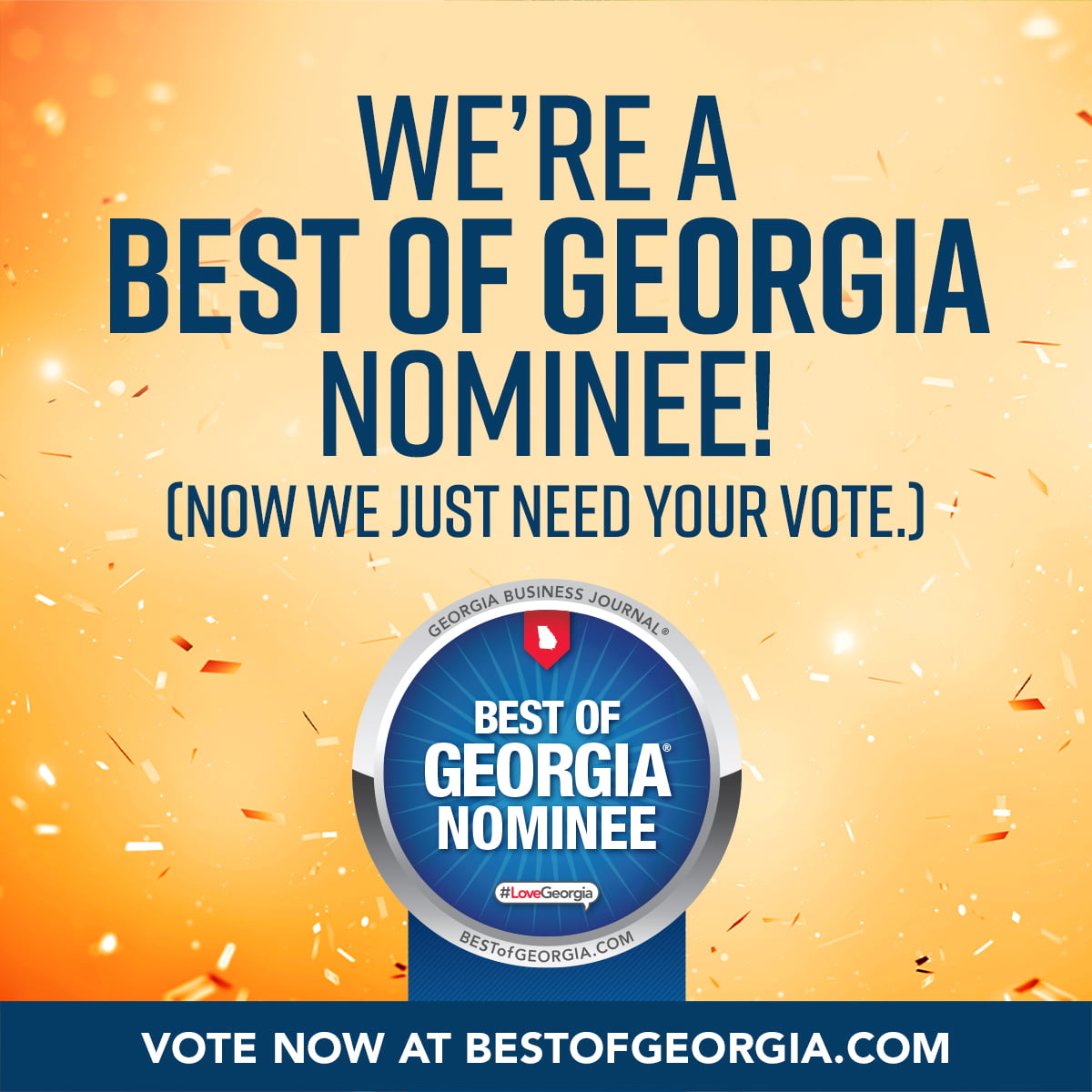In a world where consumers are bombarded with content across countless digital and physical platforms, brand consistency has become more than a best practice—it’s a competitive necessity. When your messaging, visuals, and tone remain cohesive across social media, websites, print materials, and customer interactions, you create a recognizable and trustworthy presence that reinforces your brand identity. Consistency not only builds credibility but also strengthens customer loyalty and helps drive conversions. In this article, we’ll explore why brand consistency matters, how it impacts perception and performance, and what steps you can take to ensure your brand remains unified no matter where it appears.
The Secret to Cross-Platform Success? Brand Consistency
What Is Brand Consistency and Why Is It Essential for Business Success?

Brand consistency means presenting a unified message and identity across all marketing channels. This includes visuals like logos and color schemes, as well as tone, language, and messaging. When done right, it builds recognition, fosters trust, and strengthens customer relationships.
Customers are more likely to trust a business that feels familiar. Seeing the same branding—whether on a website, social media page, or storefront—signals professionalism and dependability. When everything from messaging to design aligns, people begin to associate your business with stability and quality. Over time, this recognition can lead to customer loyalty and repeat business.
Maintaining consistency is especially important in digital spaces. Whether someone is reading a review, interacting with a business listing, or browsing your site, they should get a sense of who you are and what you stand for. A disjointed or inconsistent presence can confuse or alienate potential customers. Consistent branding, on the other hand, supports everything from search visibility to reputation.
How Does Brand Consistency Build Customer Loyalty and Trust?
Trust is built through familiarity. The more often a customer sees and recognizes your brand in a consistent way, the more comfortable they become with it. That comfort can translate into repeat business, higher conversion rates, and better word-of-mouth.
When a customer visits your site and sees the same look and tone they saw in an email or ad, it creates a seamless experience. That consistency reinforces your credibility. It shows you’re organized, focused, and serious about your identity. Over time, this kind of familiarity helps customers feel confident in your services or products.
Consistent branding also creates emotional connections. It reduces the uncertainty people often feel when trying a new business. If someone recognizes your brand and has had a positive experience in the past, they’re more likely to return and recommend it to others. This is especially true in competitive markets where trust and reputation are deciding factors.
What Are the Core Elements of Brand Consistency?
At its foundation, brand consistency includes visuals, messaging, and tone. Visual elements like logos, fonts, and colors should be uniform across all platforms. Messaging should follow the same tone and language—whether casual and friendly or professional and direct. Tone matters just as much as visuals. If your brand uses a certain voice in social media posts, it should carry over into emails, landing pages, and even customer service replies. That doesn’t mean every message has to sound identical, but it should all feel like it comes from the same source.
To manage this, many companies develop brand guidelines. These documents outline everything from logo placement to writing style. They serve as a reference point to keep everyone aligned—whether it’s your marketing team or third-party vendors. This approach not only reduces errors but ensures that every customer interaction reinforces your brand.
How Does Consistent Branding Impact Revenue and ROI?
Brand consistency doesn’t just improve customer experience—it has a direct effect on revenue. Studies show that businesses with strong, consistent branding see higher customer retention and more referrals. Some research suggests this can lead to revenue increases of 20 to 30 percent.
It also reduces marketing costs. When your message is clear and recognizable, you don’t have to work as hard to explain who you are. There’s no need to repeatedly reintroduce your business or educate your audience from scratch. That efficiency adds up, especially when combined with well-executed digital strategies that rely on consistent branding to drive engagement and performance. Ultimately, brand consistency is more than a design choice. It’s a business strategy. When customers know what to expect and recognize your voice and visuals across platforms, they’re more likely to trust your brand and choose it again and again.
How Do You Develop Effective Brand Guidelines to Ensure Consistency?

Brand guidelines act as the foundation for how a company presents itself. They provide clear direction for maintaining consistency across every point of communication, both inside the company and in public-facing materials. This includes everything from logo usage to the tone of voice used in written content.
Without defined guidelines, it’s easy for brand elements to drift over time. Teams may create marketing materials that feel disconnected, or vendors might interpret design elements in ways that dilute the brand’s identity. Strong guidelines help avoid this by outlining exactly how the brand should look and sound. Establishing these rules also supports broader business goals. When a brand appears consistent and well-managed, it helps build trust with customers and makes your messaging more effective. It’s easier for people to remember and connect with a business that maintains a clear identity.
What Visual Identity Elements Should Brand Guidelines Include?
The visual identity section of your brand guidelines should cover all key design components. This typically includes rules for logo usage, such as how it should appear on light and dark backgrounds, minimum sizes, and acceptable spacing. Color palettes should be clearly defined with specific hex or RGB codes, so there’s no guesswork about which shade of blue or red is being used. Typography is another important part of this. Your brand should specify which fonts are acceptable and when to use them. Consistency in typefaces across print, web, and mobile platforms creates a more cohesive experience for the user.
Photography and illustration styles also matter. Guidelines should outline the tone and subject matter of imagery used in marketing campaigns and on the website. For example, your brand may favor clean, minimal photos with natural lighting, or it might lean toward bold, high-contrast visuals. Clarifying these preferences helps your brand maintain a consistent tone even when using different photographers or designers.
How to Define Brand Voice and Messaging for Consistency?
Beyond visuals, your brand voice needs to be clear and recognizable. This refers to the style and tone of your communication. Some brands are casual and conversational, while others are formal and precise. Neither is right or wrong, but once a tone is chosen, it needs to be used consistently.
Your guidelines should outline how the brand “speaks” to its audience. This might include preferred vocabulary, sentence structure, and the level of formality used in everything from website content to customer service emails. A mission statement or tagline should also be included, along with examples of writing that reflect the brand’s personality.
For example, if your brand is positioned as friendly and helpful, your website content and email campaigns should reflect that in both tone and structure. If you’re more focused on professionalism and authority, your content should reflect expertise without becoming overly technical or distant.
What Are Best Practices for Creating and Using Brand Guidelines?
Creating strong brand guidelines takes time and input from multiple parts of your business. It’s important to include not just marketing and design teams but also those who handle customer service, product development, and content creation. Everyone who interacts with the brand should understand how to apply these rules. Researching how your competitors present themselves can also help. This gives you insight into what works in your industry and where your brand can stand out. Your guidelines should be updated regularly to reflect changes in branding, product offerings, or customer preferences.
Once created, make the guidelines easy to access. Store them in a shared space where employees and external partners can reference them as needed. Include examples and explanations to make the rules easier to follow. Training new employees on these guidelines ensures consistency from the beginning. Ongoing reviews and updates keep your branding aligned with the company’s growth and goals.
How Can You Conduct a Brand Consistency Audit Across All Digital Platforms?

A brand consistency audit is the process of reviewing all digital touchpoints to ensure your business is presenting a unified and accurate brand identity. This includes checking that your messaging, tone, visuals, and overall user experience are aligned with your established brand standards. Everything from your website and social media profiles to your business listings and email campaigns should be consistent.
Discrepancies in how your brand is presented can create confusion for potential customers and weaken trust. Even small inconsistencies, like a mismatched logo or outdated tagline, can give the impression that your brand is disorganized. A thorough audit allows you to identify these brand gaps and address them before they begin to impact your reputation or marketing performance.
A good place to start is with your website. Review each page to confirm the branding elements are up to date and aligned with your visual guidelines. This includes your logo, color scheme, typography, tone of voice, and imagery. From there, move to your business listings, such as your Google Business Profile, and confirm that your business name, description, contact details, and images are accurate and current. Then, evaluate your presence across social media channels to ensure the tone and design are consistent with your website.
What Tools and Checklists Help Identify Brand Inconsistencies?
To carry out an effective brand audit, you’ll need a checklist based on your brand guidelines. This should cover visual standards like logo usage, color palettes, and imagery, as well as content-related items like voice, tone, and key messaging. Using this list, evaluate each channel carefully. Analytics tools can also help flag inconsistencies. For example, if one social platform performs poorly compared to others, the issue may be tied to how the brand is being presented. Platforms like Google Analytics or social media insights tools can uncover these performance gaps.
Content review tools can help track how frequently your brand guidelines are followed in blog posts, newsletters, or social posts. In some cases, inconsistencies arise not from design but from messaging that doesn’t align with your brand tone or values. Keeping all these elements in sync helps maintain a clear and recognizable brand.
How to Analyze Brand Presence on Websites, Social Media, and Email
Begin by evaluating your website. Look at your homepage, landing pages, and blog posts to ensure your voice, tone, and visual identity match what’s outlined in your brand standards. Pay attention to how easy it is for users to recognize your business and whether the site experience aligns with your brand image.
On social media, compare your profiles side-by-side. Are the profile images consistent? Does the tone of your posts reflect your brand personality? Do the graphics and videos follow the same design principles? Regular audits of your social content help catch subtle deviations that might go unnoticed over time. When reviewing email marketing, focus on elements like subject lines, sender names, email signatures, and templates. These should all reflect your brand clearly and consistently. If your open and click-through rates are lower than expected, it may signal that your brand voice is off or that the messaging doesn’t resonate with your audience.
What Steps Follow After Identifying Brand Gaps?
Once you’ve pinpointed inconsistencies, prioritize updates based on which platforms or materials have the most visibility or the largest audience. It’s important to correct the most impactful areas first. For example, if your website or business listing has conflicting brand information, update those immediately. Then, create a plan for addressing the remaining issues. This may include refreshing your brand assets, aligning teams on updated messaging, or providing additional training to internal staff and content contributors. Setting a timeline for updates and scheduling a follow-up audit ensures the changes are implemented and sustained.
Lastly, establish a system for ongoing monitoring. Make brand audits a regular part of your workflow, especially when launching new campaigns or platforms. Keeping all channels aligned strengthens your brand’s credibility and helps deliver a more cohesive experience to your audience.
What Strategies Maintain Brand Consistency Over Time?

Keeping a brand consistent takes more than setting a few design rules. It requires ongoing attention, regular check-ins, and systems that support long-term alignment across every channel. As a business grows or adds new platforms, maintaining that consistency becomes more challenging. Visuals, messaging, and tone all need to match what your brand stands for.
A good place to begin is by establishing internal processes that make brand alignment part of everyday operations. This often includes periodic reviews of customer-facing materials, updates to brand guidelines, and simple workflows that help ensure each team is using the most current assets. Whether it’s a landing page, an email template, or a social media post, the tone, look, and message should all reflect the same brand identity.
Technology also plays a role. Tools that manage content, store brand assets, and track performance can make consistency easier to maintain. So does clear documentation of what your brand is—and isn’t. But even the best tools won’t help if your team isn’t on the same page. That’s where training comes in.
How to Train Employees and Teams on Brand Guidelines?
Your employees are often the first impression someone gets of your brand. Whether they’re answering emails, designing graphics, or posting online, they need to understand what your brand represents and how to reflect it accurately.
Training should be built into the onboarding process and reinforced regularly. That might mean in-person sessions, video tutorials, or quick-reference guides depending on the size and structure of your team. What matters is that everyone—from marketing to customer support—understands how to apply the brand consistently in their work.
This includes not just the visual identity but also the tone of voice, values, and positioning. Giving examples of what’s on-brand versus off-brand helps employees make better decisions without needing constant oversight. It’s also helpful to build in regular refreshers so that updates to the brand are communicated clearly across the organization.
Which Brand Asset Management Tools Support Consistency?
Managing brand materials across teams and platforms is easier when you have a centralized system. Brand asset management tools make it simple to store, organize, and share everything from logos and style guides to approved templates and images. They ensure everyone is working from the latest version and reduce the risk of outdated or incorrect visuals making it into the public eye.
These platforms often connect with content creation and publishing tools, helping teams stay efficient and aligned. Many include features that flag incorrect logo use or outdated colors, which can help enforce standards automatically. The result is fewer mistakes and more consistent branding across websites, social posts, email campaigns, and more.
How to Monitor and Measure Brand Consistency Effectiveness?
Maintaining consistency is one thing—measuring it is another. To understand whether your brand is coming across the way you intended, you need both data and feedback. That includes reviewing engagement rates, website performance, and customer satisfaction scores. If the numbers dip when your brand presence changes, that could be a sign that consistency has been lost.
You can also review how customers describe your business in reviews and on social media. Does their language reflect the tone and values you’re aiming for? If not, it might be time to revisit how your brand is presented online.
Regular internal audits are also useful. Set aside time to go through your website, social channels, and marketing materials to spot inconsistencies. Having a checklist or clear brand guidelines helps make that review process more efficient. Over time, these checks help catch small issues before they become bigger problems, keeping your brand identity strong and recognizable.
In short, brand consistency isn’t just about appearances—it’s about building trust. When customers know what to expect from your brand, they’re more likely to come back and recommend you to others. That kind of loyalty comes from staying true to your message, your visuals, and your voice over time.
How Does Brand Consistency Vary Across Different Digital Platforms?

Maintaining brand consistency across digital platforms doesn’t mean repeating the exact same message or format everywhere. Each platform has its own style, audience expectations, and technical limitations. The goal is to keep the brand recognizable while adapting to fit each environment.
What Are Best Practices for Brand Consistency on Social Media?
Social media moves quickly, but that doesn’t mean consistency should take a back seat. In fact, fast-moving platforms require even more attention to detail. Use the same profile image, keep bios aligned, and ensure your brand voice stays true across every post and comment.
Each post should contribute to the overall brand narrative. That means using the same tone of voice, brand visuals, and messaging themes. Scheduling tools can help plan content in advance and keep your posting cadence steady. This kind of planning prevents sudden shifts in tone or style, which can feel jarring to followers.
It also helps to monitor engagement regularly. If your posts are performing differently across platforms, look closely at how your messaging might be interpreted in each context. This isn’t about changing your brand—it’s about refining how you present it without straying from its foundation.
How to Maintain Consistent Branding on Websites and Email Marketing
Your website is often the first detailed interaction someone has with your brand, so it needs to make a strong, clear impression. From the homepage to the footer, each page should reflect your brand’s identity. That includes using consistent fonts, layouts, and imagery, as well as ensuring all messaging supports your core values and voice.
Email marketing is another opportunity to reinforce consistency. Branded templates that reflect your website’s design create a sense of continuity. Elements like logo placement, color usage, and button styles should remain consistent across campaigns. The tone and language should also reflect what readers expect from your brand, whether it’s professional, casual, or something in between. Small adjustments based on audience behavior—such as tweaking subject lines or calls to action—are fine, but the heart of your message should stay intact.
How to Ensure Consistency in Digital Advertising and Paid Campaigns?
Paid campaigns often target new audiences, making consistency even more critical. These ads should reflect the same visuals, tone, and message found on your website and social media. If someone clicks an ad and lands on a page that looks or feels different, the experience becomes disjointed. To avoid that, creative materials for ads should follow the same brand guidelines used elsewhere. This includes logo usage, tone of voice, and color schemes. Campaigns should be reviewed regularly to ensure they’re not just effective but also in line with your broader brand identity.
Analytics can provide insight into what’s working and where the message may need fine-tuning. Over time, aligning your paid and organic content reinforces brand trust and makes your marketing efforts feel more cohesive to your audience. Maintaining consistency across platforms is not just about visuals. It’s about presenting a clear, unified message that supports recognition, builds trust, and ensures that every interaction—no matter where it happens—feels like part of the same experience.
What Are Real-World Examples and Case Studies Demonstrating Brand Consistency Success?

Brand consistency is more than a design choice—it’s a strategy that drives real business results. When done well, it can increase recognition, improve customer trust, and boost revenue across multiple channels. Brands that maintain a uniform identity across their marketing efforts often gain a competitive edge in saturated markets.
How Did Leading Brands Like Coca-Cola and Apple Achieve Consistency?
These companies didn’t achieve consistency by accident. They rely on well-documented brand guidelines that every team, from marketing to customer service, is expected to follow. These guidelines include how the logo is used, which fonts are approved, and the tone of voice in messaging.
In Coca-Cola’s case, the focus is on positivity and tradition. No matter the platform—TV, print, social media, or in-store promotions—the message is familiar. Apple, by contrast, has focused on clarity and precision. Every piece of content, whether a product launch or a help article, reflects the same design standards and voice. Both companies make ongoing investments in reviewing and adjusting their branding to keep it fresh without straying from what makes them recognizable.
What ROI Improvements Have Clients Experienced Through Brand Consistency?
Smaller businesses that adopt consistent branding practices also report tangible results. Businesses often see higher engagement on their websites and social media when the visual elements and messaging are aligned. Customers tend to trust companies more when their experience is predictable and polished, which leads to more conversions and stronger long-term relationships.
For example, a local service-based business that updates its website, social media profiles, and marketing emails to match a unified style can notice improved ad performance and customer response. Consistency reduces confusion and strengthens a customer’s sense of familiarity with the brand, which directly affects how likely they are to return or refer others. Beyond engagement, businesses often see lower marketing costs as well. When the brand identity is clearly established, teams don’t need to reinvent the wheel for every campaign. Instead, they can focus on refining and scaling what already works.
How Can You Apply These Lessons to Your Own Brand?
Start by developing clear brand guidelines. These should outline how your logo is used, which colors and fonts are approved, and what tone of voice your brand uses. Apply these guidelines consistently across your website, social media, advertising, and email communications.
It also helps to perform regular reviews of your digital content to catch inconsistencies before they impact customer perception. This can include checking whether your visuals align with your messaging or whether your tone matches across platforms. Training internal teams and working with vendors who understand your brand expectations will make it easier to maintain alignment. Using digital tools to store and manage brand assets ensures that everyone involved in content creation is working from the same materials.
Finally, while consistency matters, it’s also important to revisit your guidelines periodically. Brands evolve, and making updates in a controlled, thoughtful way ensures your business stays relevant while remaining recognizable. By applying these practices, even smaller businesses can benefit from the same principles that have helped industry leaders build lasting trust and loyalty.
What Are the Emerging Trends and Future Directions in Brand Consistency?

As digital platforms grow more complex, the way businesses approach brand consistency is changing. Maintaining a consistent brand image used to mean sticking to a specific logo or using the same tone across marketing materials. Today, it’s more involved. Companies must now ensure their message stays clear across a wide range of digital channels, while still adapting to the expectations of different users.
One key trend is the shift toward more personalized interactions. Brands are using customer data to tailor experiences, without sacrificing the core elements that define their identity. This means developing flexible content that fits the customer’s context but still feels unmistakably tied to the brand. At the same time, companies are investing in tools that help enforce brand standards across websites, apps, social media, and email campaigns.
Artificial intelligence and machine learning are beginning to play a role as well. These technologies can help flag inconsistencies and provide real-time adjustments to ensure brand guidelines are followed. Combined with data analytics, businesses can use these tools to better understand how customers perceive their brand and make informed changes.
How Is Personalization Influencing Brand Consistency Strategies?
Personalization is no longer just a marketing tactic—it’s part of the customer experience. Whether it’s a personalized product recommendation or a targeted email campaign, these interactions need to feel authentic without deviating from the overall brand message. The challenge is to strike a balance between individualized content and a consistent brand voice.
Businesses are using automation platforms to manage this balance. These tools allow for scalable personalization while keeping key design and messaging elements in place. For example, the wording in a message might change depending on a user’s behavior, but the tone and visuals will still match what customers expect from the brand.
Personalization also extends into how a brand is represented across channels. Even small differences in how a brand appears on social media versus its website can undermine trust. Keeping that alignment tight ensures the brand stays recognizable, even when delivering content tailored to different audience segments.
Why Is Omnichannel Consistency Becoming More Critical?
Customers now interact with businesses across multiple devices and channels, often within a single transaction. Someone might see an ad on Instagram, read reviews online, visit a store’s website, and then complete a purchase in an app. Inconsistent branding across these touchpoints can create confusion and hurt credibility.
Maintaining a seamless brand experience means syncing marketing and customer service efforts across every platform. It’s not just about repeating the same message—it’s about reinforcing the same identity, values, and tone no matter where the customer encounters the brand. Companies that get this right often see stronger customer engagement and better retention. When customers recognize the brand and know what to expect, it removes friction from their journey. They feel more confident making a purchase and are more likely to return.
How Can Video Marketing Enhance Brand Consistency?
Video continues to grow as one of the most effective formats for engaging audiences. It gives businesses an opportunity to express their brand through sound, visuals, and motion, making it easier to leave a lasting impression.
The key to using video effectively is maintaining consistency in how the brand is presented. This includes using the same visual themes, tone of voice, and messaging style that appear elsewhere in the brand’s marketing materials. Whether it’s a short video on Instagram or a longer product demonstration on YouTube, the content should feel like it comes from the same brand.
When used strategically, video can also support broader efforts in search visibility and user engagement. Platforms like Facebook, YouTube, and TikTok give businesses space to share content that entertains, informs, and persuades—all while reinforcing a consistent brand experience. As new tools and platforms continue to emerge, the businesses that stay focused on clear, consistent messaging—adapted for each context—will stand out the most.
Frequently Asked Questions
Q: What is brand consistency and why is it important for small businesses? A: Brand consistency means presenting the same message, tone, and visual identity across all customer touchpoints. This includes everything from your logo and color scheme to how you communicate on your website, social media, and marketing materials. For small businesses, it builds trust and makes your brand easier to recognize. A consistent presence helps customers feel more confident in your services, which can lead to increased loyalty and better long-term results.
Q: How do brand guidelines help in maintaining consistency? A: Brand guidelines act as a reference for how your brand should look and sound. They include specific instructions for using your logo, selecting colors and fonts, writing in the right tone, and maintaining consistent messaging. These rules help internal teams and outside partners stay aligned, especially when creating digital content or advertising. Over time, they reduce confusion and ensure the brand is presented clearly and professionally, no matter where or how it appears.
Q: What are the recommended tools for managing brand consistency? A: There are several tools that can help keep brand assets organized and properly used. Platforms like Adobe Experience Manager, Bynder, and Brandfolder store all branding materials in one place. These tools also support version control and access permissions, which helps teams avoid outdated or incorrect content. When integrated with your website, email marketing tools, and content management systems, they can streamline workflows and make it easier to maintain a cohesive brand across all digital platforms.
Q: Can digital advertising and social media maintain the same consistency as websites and emails? A: Yes. While each platform has its own format and audience expectations, the core elements of your brand—such as your logo, visual style, and tone—should remain the same. The goal is to make sure a customer recognizes your brand whether they see it in a paid ad, on a social post, or in an email. Adjusting the message slightly to fit the platform is fine, as long as it doesn’t change the overall brand identity. This consistency helps build recognition and reinforces trust.
Q: How often should a brand consistency audit be conducted? A: A brand audit should be scheduled at least twice a year. These reviews assess whether your current branding is being used correctly across all platforms and materials. Audits can help identify outdated content, design inconsistencies, or messaging that no longer fits your brand goals. They are also a good opportunity to refresh training for your team and ensure that any new marketing efforts stay aligned with your established brand guidelines.
Q: What impact does consistent branding have on ROI? A: When your branding is consistent, customers are more likely to recognize your business, understand your value, and trust your messaging. This can lead to higher engagement, stronger conversion rates, and better customer retention. Over time, a reliable brand identity reduces the amount of effort needed to win over new customers, which lowers marketing costs. Companies that maintain consistency often see improved revenue and stronger long-term growth.
Q: How can emerging trends like personalization and omnichannel marketing affect brand consistency strategies? A: These trends give businesses new ways to connect with customers but can also introduce challenges. Personalization means adapting content to individual users, while omnichannel marketing involves keeping communication aligned across many platforms. To succeed, businesses must deliver tailored experiences that still reflect a unified brand. This requires clear brand guidelines, careful monitoring, and frequent adjustments to keep the experience consistent even as the channels and content evolve.
Final Thoughts
Consistent branding across every touchpoint—from your website and social media to email campaigns and offline materials—builds recognition, trust, and a cohesive customer experience. By unifying your visual identity, tone, and messaging, you’ll create a memorable brand that resonates and endures. If you’re ready to lock in your brand’s consistency and drive success across all platforms, Newman Web Solutions is here to guide you with our professional digital marketing strategies. Call us at (404) 301-9189 or book a free 30-minute strategy session today to ensure your brand shines, everywhere it appears!





